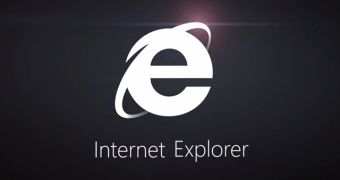Microsoft has been a lot more welcoming to web standards, ever since Firefox and Chrome started eating away at Internet Explorer's market share. IE9 and IE10 after it are mostly on par with other modern browsers, a big change from the days of Internet Explorer 6.
That said, Microsoft still has some unique ideas on how to do things and still refuses to support some technologies now supported by most competitors.
But that's about to change it seems, there are hints that Internet Explorer 11, part of the upcoming Windows Blue update coming out later this year, will support both the SPDY protocol and WebGL, the 3D graphics technology.
If that's true, it will be quite a departure from Microsoft of even a few months ago. When everyone else was busy implementing WebGL, Microsoft was complaining about it being a security risk.
So far, no one has gotten infected with malware via WebGL. Plenty of people have by running Internet Explorer.
Likewise, while SPDY, which was developed by Google, is now supported by most major browsers and by several big sites, Microsoft came up with an alternative it called HTTP Speed+Mobility, a different protocol based on SPDY but with some crucial differences.
The Internet Engineering Task Force is working on HTTP 2.0, an update of the protocol that underlies the web, partly in response to the popularity of SPDY.
Google proposed SPDY as the basis for the upcoming HTTP 2.0, backed by Mozilla, Opera, Facebook and others.
But Microsoft came up with its own proposal, a protocol based on SPDY but with some additional features for mobile devices and without the requirement of using encrypted connections all the time.
So, while WebGL support in IE11 may be a bit surprising, SPDY support is even more so. Still, considering that Microsoft's alternative is SPDY at core, it makes sense to implement SPDY for now and modify it later if Microsoft's proposal should actually become HTTP 2.0.
Given that SPDY is already used in the wild and that HTTP 2.0 is still years away, it doesn't make much sense to hold out on supporting SPDY, for now.
All of this is good news for Windows users, even for those using other browsers, as apps beyond IE will be able to use the built-in SPDY support in Windows.
It seems that these days, people have more to worry about Google unilaterally supporting web technologies rather than Microsoft, as is the case with Native Client and especially with HTML5 DRM. Granted, Microsoft supports HTML5 DRM as well, some habits die hard.

 14 DAY TRIAL //
14 DAY TRIAL //